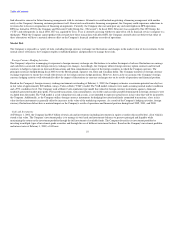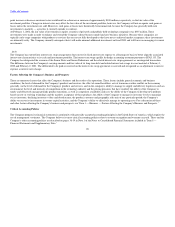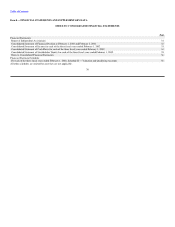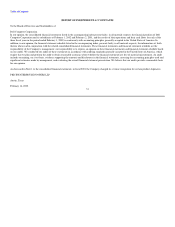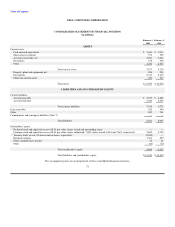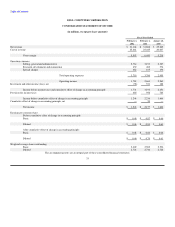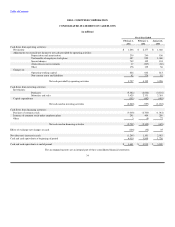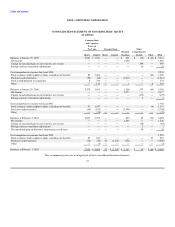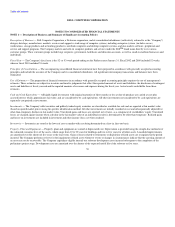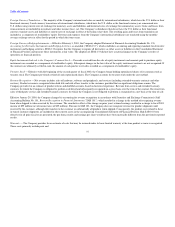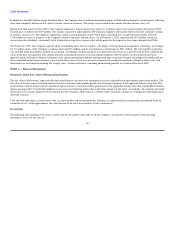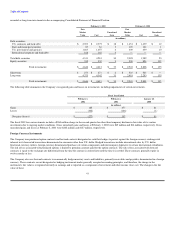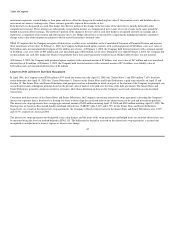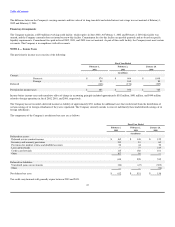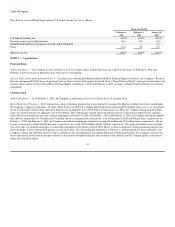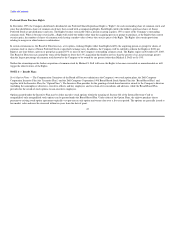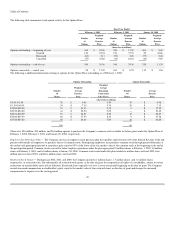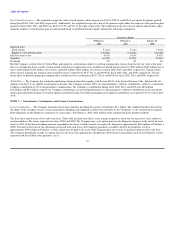Dell 2001 Annual Report Download - page 40
Download and view the complete annual report
Please find page 40 of the 2001 Dell annual report below. You can navigate through the pages in the report by either clicking on the pages listed below, or by using the keyword search tool below to find specific information within the annual report.
Table of Contents
Foreign Currency Translation — The majority of the Company's international sales are made by international subsidiaries, which have the U.S. dollar as their
functional currency. Local currency transactions of international subsidiaries, which have the U.S. dollar as the functional currency are remeasured into
U.S. dollars using current rates of exchange for monetary assets and liabilities and historical rates of exchange for nonmonetary assets. Gains and losses from
remeasurement are included in investment and other income (loss), net. The Company's subsidiaries that do not have the U.S. dollar as their functional
currency translate assets and liabilities at current rates of exchange in effect at the balance sheet date. The resulting gains and losses from translation are
included as a component of stockholders' equity. Revenue and expenses from the Company's international subsidiaries are translated using the monthly
average exchange rates in effect for the period in which the items occur.
Foreign Currency Hedging Instruments — Effective February 3, 2001, the Company adopted Statement of Financial Accounting Standards No. 133,
Accounting for Derivative Instruments and Hedging Activities, as amended ("SFAS 133"), which establishes accounting and reporting standards for derivative
instruments and hedging activities. SFAS 133 requires that the Company recognize all derivatives as either assets or liabilities in the Consolidated Statement
of Financial Position and measure those instruments at fair value. The adoption of SFAS 133 did not have a material impact on the Company's results of
operations or financial position.
Equity Instruments Indexed to the Company's Common Stock — Proceeds received from the sale of equity instruments and amounts paid to purchase equity
instruments are recorded as a component of stockholders' equity. Subsequent changes in the fair value of the equity instrument contracts are not recognized. If
the contracts are ultimately settled in cash, the amount of cash paid or received is recorded as a component of stockholders' equity.
Treasury Stock — Effective with the beginning of the second quarter of fiscal 2002, the Company began holding repurchased shares of its common stock as
treasury stock. The Company previously retired all such repurchased shares. The Company accounts for treasury stock under the cost method.
Revenue Recognition — Net revenue includes sales of hardware, software and peripherals, and services (including extended warranty contracts and other
services). Product revenue is recognized when both title and risk of loss transfer to the customer, provided that no significant obligations remain. The
Company provides for an estimate of product returns and doubtful accounts, based on historical experience. Revenue from service and extended warranty
contracts for which the Company is obligated to perform is deferred and subsequently recognized on a gross basis over the term of the contract. Revenue from
sales of third party service and extended warranty contracts for which the Company is not obligated to perform is recognized on a net basis at the time of sale.
Effective January 29, 2000, the Company changed its accounting for revenue recognition in accordance with Securities and Exchange Commission's Staff
Accounting Bulletin No. 101, Revenue Recognition in Financial Statements ("SAB 101"), which resulted in a change in the method of recognizing revenue
from when shipped to when received by the customer. The cumulative effect of the change on prior years' retained earnings resulted in a charge to fiscal 2001
income of $59 million (net of income taxes of $25 million). Pursuant to SAB 101, the Company does not recognize revenue for product shipments until
received by the customer, although title transfers to the customer on substantially all products when shipped. Consequently, the product costs related to these
in-transit customer shipments are included in other current assets in the accompanying Consolidated Statement of Financial Position. Had SAB 101 been
effective for all prior fiscal years presented, the pro forma results and earnings per share would not have been materially different from the previously reported
results.
Warranty — The Company provides for an estimate of costs that may be incurred under its basic limited warranty at the time product revenue is recognized.
These costs primarily include parts and
37


